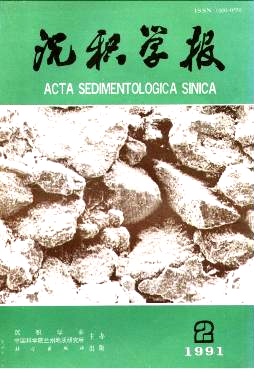Fluvial Palaeosoils and its Application on the Correlation of Fluvial Deposits
- Received Date: 1989-03-27
- Publish Date: 1991-06-10
Abstract: This paper, taking the palaeosoils in Upper Guantao Formation, Gudong oilfield as an example, discusses mainly three questions about fluvial palaeosoils. 1.Several identification criterias in cores data were summarized, that is, Ⅰ.in a palaeosoil profile, the vertical changing of sediments colour is sequential, the vertical changing of percentage of many components is regular, the sedimentary structures disappear gradually upwards, and the diagenetic degree decreases gradually upwards; Ⅱ.original roots; Ⅲ.calcite glaebule; Ⅳ.mud crack; Ⅴ.palaeosoil profiles are situated in the uppermost part of fluvial rhythmic profiles. 2.The maturity of a concrete palaeosoil profile was influenced directly by five factors, ie.climate, original sediments, topography, biomass and time, however, the development of palaeosoil in a thick (e.g, thicker than 100 m) profile of fluvial sediments was controlled by three geologic actions, i.e., crust movements, river channel changing, and flooding. 3. Palaeosoil can be used as a zonation marker of fluvial deposits because there is little difference of palaeosoil development in the region of a palaeoriver system.Two steps are finished to get the application of Gudong palaeosoils on the correlation of the fluvial deposits in Upper Guantao Formation, GuDong oilfield.The first is to build a controlling framework for correlation of formations by using the difference between palaeosoil sets and non-palaeosoil sets as a zonation marker, and the second is to make a detailed correlation in polaeosoil sets by using the cyclicity of its maturity as zonation marker. At last, the paper discusses briefly the remaining questions about identification and application of fluvial palaeosoils.
| Citation: | Ye Liangmiao, Qiu Yinan. Fluvial Palaeosoils and its Application on the Correlation of Fluvial Deposits[J]. Acta Sedimentologica Sinica, 1991, 9(2): 63-70. |






 DownLoad:
DownLoad: